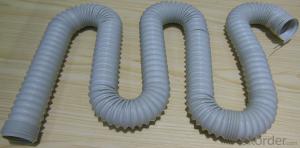Plastic Joint Tubes: Flexible and Functional
Ever wondered how the world of plumbing and construction has evolved over the years? The introduction of plastic joint tubes has revolutionized the way we approach pipe connections. These tubes are not just a modern convenience; they are a testament to the ingenuity of human innovation. Let’s dive into the world of plastic joint tubes and explore their flexibility, functionality, and the impact they’ve had on our daily lives.
The Evolution of Plumbing
Once upon a time, plumbing was a world dominated by metal pipes and rigid connections. The process was not only cumbersome but also prone to leaks and corrosion over time. The introduction of plastic joint tubes brought a breath of fresh air to this industry, offering a more flexible and durable alternative to traditional methods.
The Benefits of Plastic Joint Tubes
Plastic joint tubes are a game-changer for several reasons. Firstly, they are lightweight, making them easier to handle and install. This reduces the physical strain on workers and speeds up the construction process. Secondly, their flexibility allows for easier navigation around corners and through tight spaces, which is a significant advantage in confined areas.
A Closer Look at the Materials
The materials used in plastic joint tubes are carefully selected for their durability and resistance to corrosion. Polyvinyl chloride (PVC) and polyethylene (PE) are common choices due to their chemical stability and ability to withstand a wide range of temperatures. These materials also have a lower environmental impact compared to metal, making them a more sustainable choice for modern construction projects.
Installation Made Easy
One of the most significant advantages of plastic joint tubes is their ease of installation. The joint system is designed to be user-friendly, with quick-connect features that reduce the need for specialized tools or extensive training. This not only saves time but also minimizes the risk of errors during the installation process.
The Role of Joints in Plumbing Systems
Joints are the cornerstone of any plumbing system. They hold the entire structure together, ensuring that water or other fluids flow smoothly without leaks. Plastic joint tubes offer a variety of joint types, including push-fit, compression, and solvent weld, each with its own set of benefits and ideal applications.
Push-Fit Joints: The Quick and Easy Option
Push-fit joints are a popular choice for their simplicity and speed. They require no glue, solder, or heat, making them ideal for DIY projects and quick repairs. Just push the tube into the fitting, and you’re good to go!
Compression Joints: A Reliable Classic
Compression joints have been around for a while and are known for their reliability. They involve a compression ring that tightens against the tube, ensuring a secure seal. This method is particularly useful in situations where a strong, long-lasting connection is needed.
Solvent Weld Joints: The Strongest Bond
For the ultimate in strength and permanence, solvent weld joints are the way to go. They create a chemical bond between the tube and the fitting, resulting in a seamless and durable connection. This type of joint is often used in critical applications where failure is not an option.
The Future of Plastic Joint Tubes
As technology advances, so does the development of plastic joint tubes. We can expect to see even more innovative materials and designs that will further enhance their flexibility, functionality, and environmental friendliness. The future looks bright for these versatile tubes, and they are poised to play a significant role in the evolution of plumbing and construction.
Embracing Change and Innovation
The world of plumbing and construction is constantly evolving, and embracing change is essential for progress. Plastic joint tubes are a prime example of how innovation can improve our lives, making tasks easier, more efficient, and more sustainable. So, the next time you turn on the tap or admire a well-constructed building, take a moment to appreciate the humble plastic joint tube and the impact it has had on our world.
In conclusion, plastic joint tubes have come a long way since their inception. They have transformed the way we approach plumbing and construction, offering a flexible, functional, and efficient solution to traditional pipe connections. As we look to the future, it’s exciting to think about the potential advancements that will continue to enhance these tubes’ capabilities and further improve our built environment.

